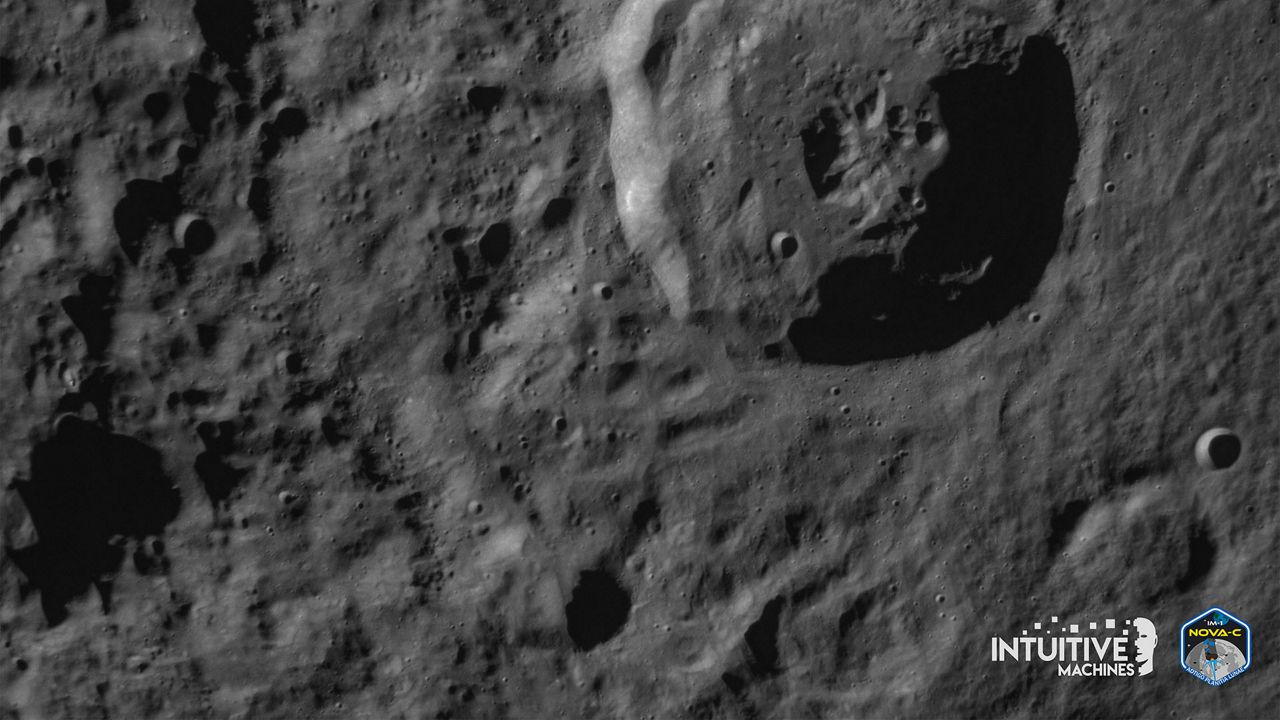KENNEDY SPACE CENTER — While calling it a “successful landing” of the IM-1 mission’s lunar lander, Intuitive Machines CEO revealed that it tipped on its side when it was coming in for a landing.
However, the IM-1 team is in communication with Odysseus and is receiving data from it.
During a teleconference with the media, Steve Altemus, CEO and co-founder of Intuitive Machines, shared the 14-foot-tall (4.3 meters) Nova-C class lunar lander was going from 25,000 mph and then slowed down to 6 mph for its soft touch down.
But as it was coming in for a landing, Altemus that one of the lander’s legs dig into the lunar ground and tipped over, where it is resting horizontally.
“If you think back from the Apollo days, there wasn’t one mission that went absolutely perfectly. So, you have to be adaptable, you have to be innovated and you have to persevere. And we persevered right up to the last moments to get this soft touch down that we wanted to,” he said.
He said that fuel tank readings helped determined the position of the vehicle.
Many of the solar arrays are getting sun, so the lunar lander’s batteries are fully charged.
He confirmed that Odysseus has been collecting data and transmitting it back to the IM-1 team on Earth.
He said three of the payloads helped with the mission.
Lunar Node 1 Navigation Demonstrator helped to determine the lander’s precise location in space.
The Navigation Doppler Lidar was used for the powered decent of the craft.
The Radio Frequency Mass Gauge gave the team an understanding how much fuel was in the tanks of the lander and what could be used for the landing.
PREVIOUS COVERAGE:
Due to an issue with Intuitive Machines’ lunar lander Odysseus’ internal navigation system, Embry-Riddle Aeronautical University’s EagleCam was not able to be deployed to capture the historic soft-moon landing of a spacecraft from a private company.
What You Need To Know
- The EagleCam was supposed to record the first third-person view of a spacecraft landing on the moon
- EagleCam will still deploy to take photos of the lander on the moon
In a press release that was issued on Friday afternoon, the university announced that there a decision was made to not deploy the EagleCam to ensure that the IM-1 mission’s Nova-C class lunar lander could safely land on the moon on Thursday evening.
“Due to complications with Odysseus’ internal navigation system — specifically concerning the software patch to navigation data to include NASA’s NDL (Navigation Doppler Lidar) payload, which is meant to ensure a soft landing — the decision was made to power down EagleCam during landing and not deploy the device during Odysseus’ final descent,” the university stated.
One of EagleCam’s mission objectives was to record for the first time, a third-person view of a spacecraft landing on the moon.
However, the EagleCam will still be deployed to take pictures of the lunar lander on the moon’s surface.
Spectrum News has reached out to the EagleCam team for comment and is waiting for a reply.
On Thursday evening, Intuitive Machines made history by being the first private company to land on the moon with its IM-1 mission. The Houston-based company’s Nova-C lunar lander, named after the Greek hero, had a soft touchdown at crater Malapert A, near the south pole of the moon.
Intuitive Machines stated there was an issue with Odysseus’ internal navigation system and the IM-1 team decided to put it in another orbit to resolve the issue before making the historic landing.
It was the first time in more than 50 years that the United States was able to return to the moon. The last time was in 1972 during the Apollo 17 mission.
The EagleCam was just one of the payloads that Odysseus carried to the moon, with many of them experiments from NASA and private companies.
The IM-1 mission is part of NASA's Commercial Lunar Payload Services program.
